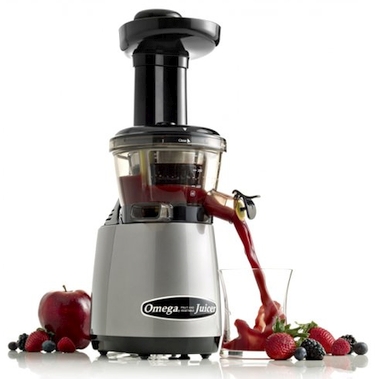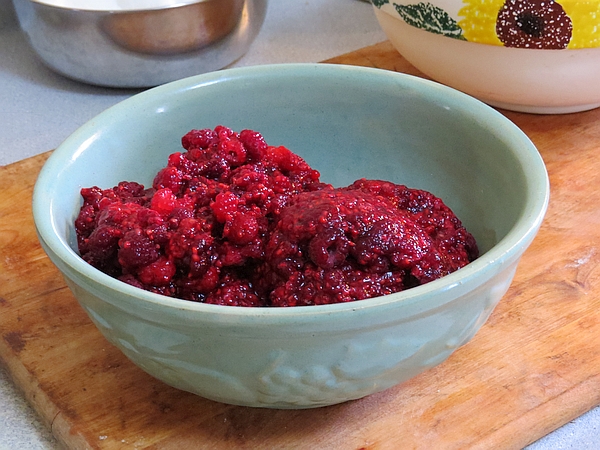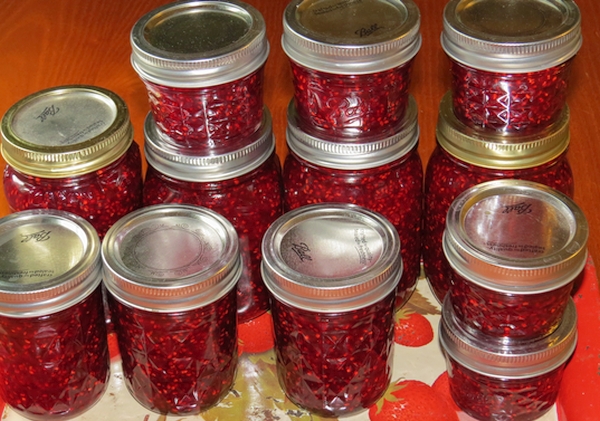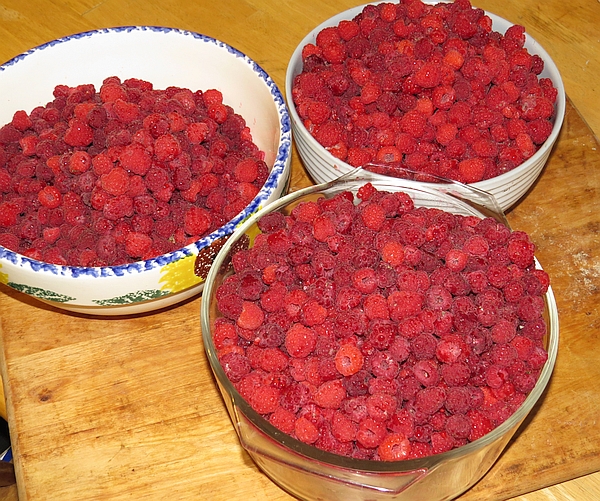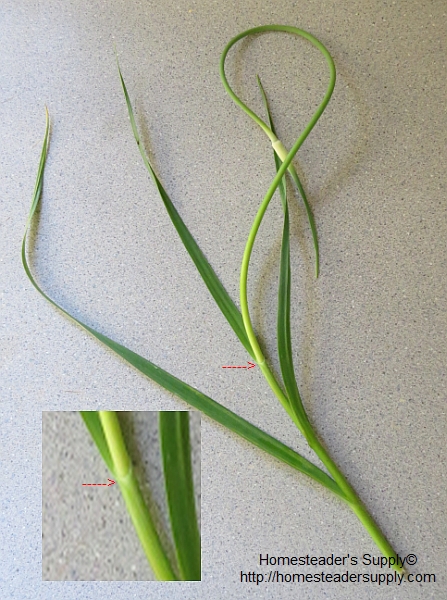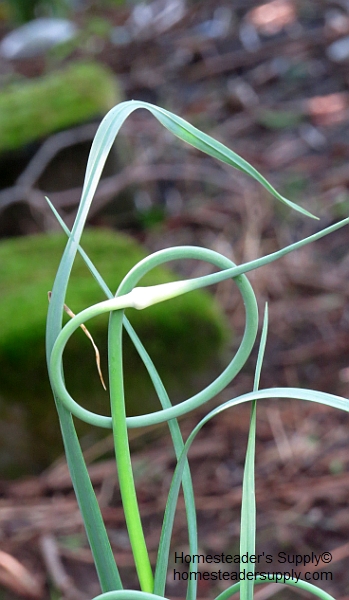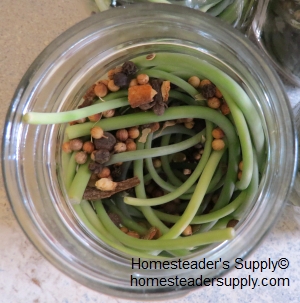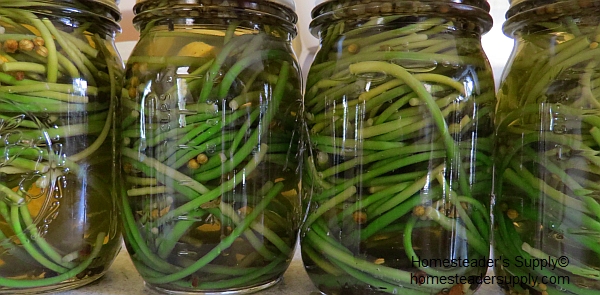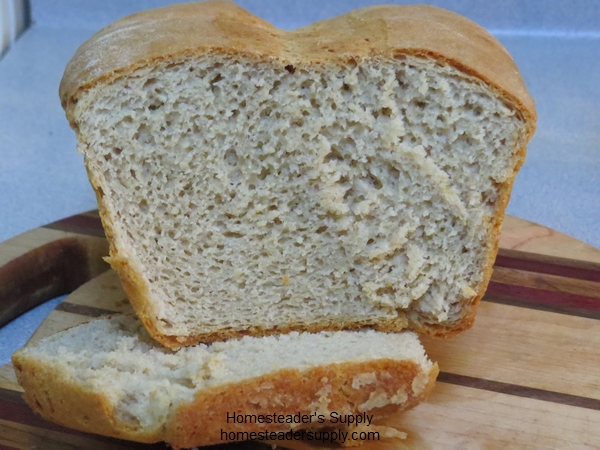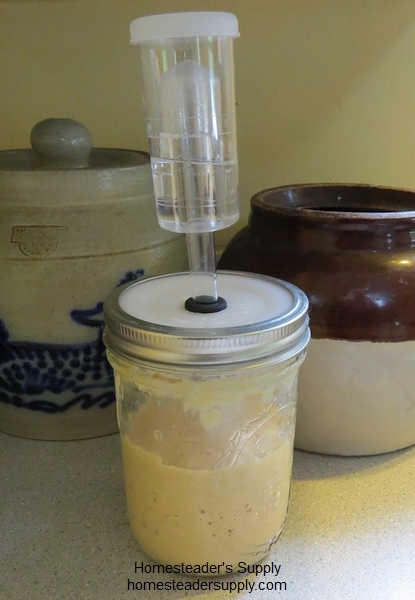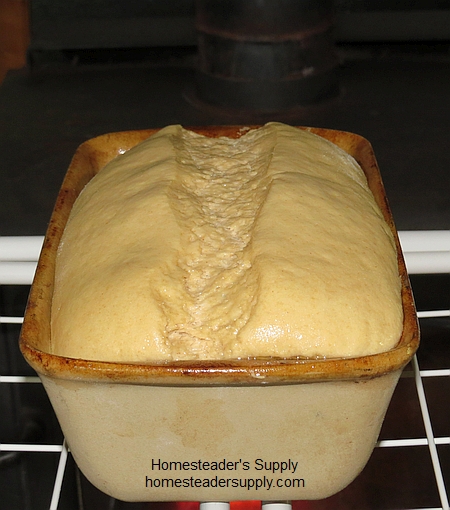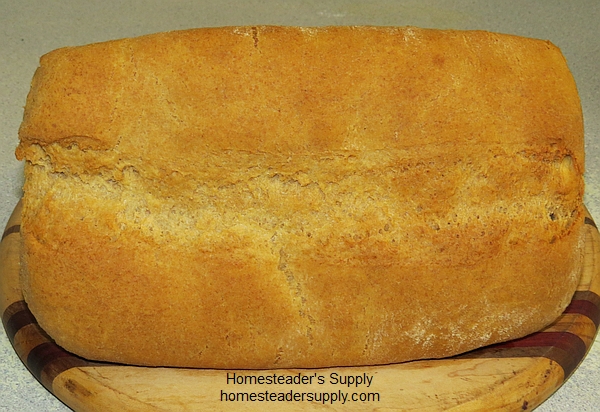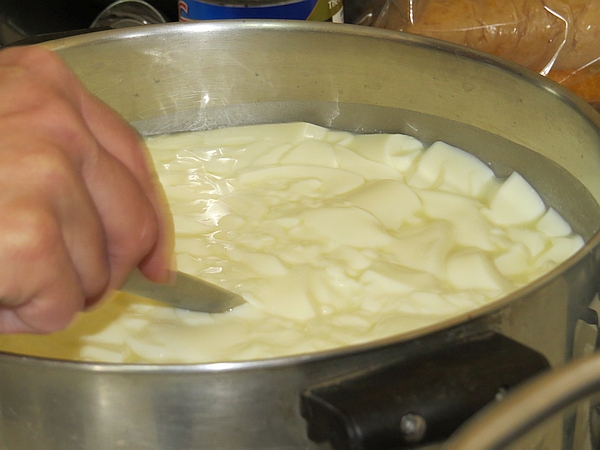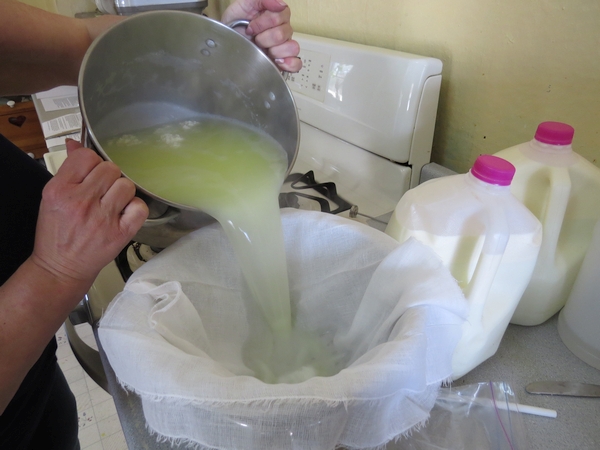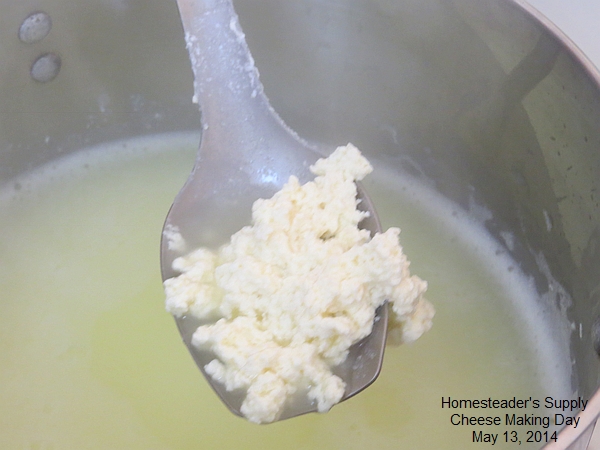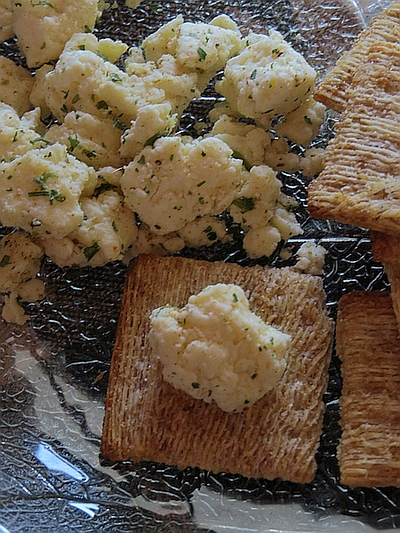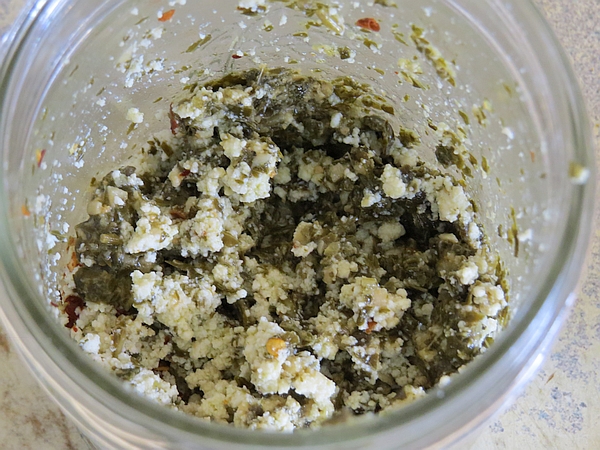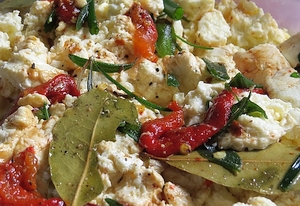Raspberry Jam
 Mid-July, raspberry time. The canes are loaded, it’s been a good year for raspberries. Picking gallons at a time barely makes a noticeable dent in amount of berries to be picked. It’s time to make raspberry jam.
Mid-July, raspberry time. The canes are loaded, it’s been a good year for raspberries. Picking gallons at a time barely makes a noticeable dent in amount of berries to be picked. It’s time to make raspberry jam.
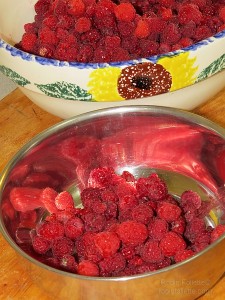
You’ll need:
- Two quarts of fresh raspberries
- 1/3 cup, rounded, bulk pectin
- 5 to 6 cups of sugar
Lightly mash raspberries, one cup at a time. You’ll have five cups of mashed berries when you finish.
Stir in pectin.
Move mixture to an eight quart pan and heat to a simmer over medium heat. When simmering, stir in sugar. Bring to a boil that can’t be stirred down and continue to boil for 60 seconds, stirring constantly.
Ladle into hot, sterile jars. Wipe the rim clean with a damp cloth. Place sterile lids and rings, leaving a 1/8″ air space, and hot water bath as recommended.
If you’d like to make jelly you can use one of our juicers to speed the process.
If you’d like to do this by hand, freeze the berries, let them thaw, and strain the seeds out. Frozen berries are much easier to juice than fresh.
There are so many things to do this time of year that being able to freeze the berries and make jelly later is a great convenience.
After thawing the berries you can heat them to around 100*. Don’t cook, just heat. Remove the juice you can pour out easily, then hang the remaining berries in cheese cloth to drip into a pan. When the dripping slows to an unproductive rate, give the cheese cloth a gentle squeeze to get the last of the juice.
Raspberry Jelly Recipe
This recipe is different than the jam recipe in a major way. This recipe doesn’t use pectin. You might need to make it a few times to get it just right. If it’s too thin you can use it as pancake syrup, on ice cream or in smoothies. It won’t be what you were aiming for but it won’t go to waste.
4 cups raspberry juice
1 1/2 pounds sugar
Mix together. Heat to a gentle boil. Skim off any foam that settles at the top. Continue to boil for 20 to 30 minutes. When your spoon is lightly coated the jelly is ready to be jarred. Ladle into hot, sterile jars, leaving a 1/8″ head space. Wipe the rim clean, place lids and rings on, tightening the rings to “finger tight.” You want it tight enough to keep water out but loose enough to let air escape during the hot water bath.

